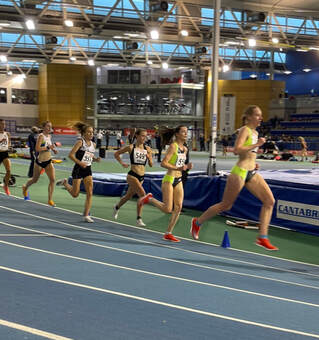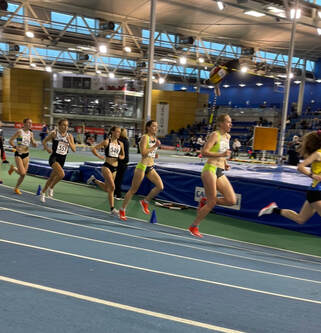|
The last time I stepped foot on an indoor track was back in 2016 at an open meet over the 3,000m distance. At that point I was struggling mentally and physically physically. I gave my all and came out with a time of 11:57. Fast forward 6 years, with no time on and indoor track since then, I decided to take on an indoor 5,000m BMC race. When my coach first suggested it, I was a little apprehensive, but I keep reminding myself that if it’s outside of my comfort zone, it is something I need to do. Ultimately, no one progressed without stepping outside of their comfort zone. The indoor track was very different to say the least, and here are a few key differences I noticed. How did it compare? Laps upon laps. The most obvious difference is the laps. An indoor track is only 200m in distance, so a 5k is a massive 25 laps. It sounds a lot of laps, and some may say it sounds boring, but I actually really enjoyed it. Due to only being 200m, I found it a lot easier to stay focused and just concentrate on ticking off lap after lap. The laps ticked by super quickly, and before you had time to think about what you were doing, you were on to the next lap. It’s also good training for getting used to 25 laps ahead of the 10,000m on the outdoor track, which whilst being the same number of laps, makes you nowhere near as dizzy as it is obviously further for each lap! Predictable conditions.
It’s also pretty obvious, but the massive bonus of racing indoors, especially in the UK at this time of the year, is that there is no need to worry about the weather conditions. We all know, this winter so far has been characterised by wind and rain, as it is most years. This isn’t always conducive for an enjoyable and fast race. Therefore, stepping inside and getting on the track, offers the chance to get a decent race in without having to battle agains the British weather. It was also pretty satisfying warming up in the wind and rain and knowing that I didn’t have to be in those conditions for the race. Breathing slightly different. Stepping indoors also has a slightly different feel on your body, specifically your breathing. The air indoors is a lot drier, and therefore can get to your throat. Going into the race, I treated it as though I was going into a race on a summers day. I also try to stay hydrated as much as I can, but in the days preceding the race, I was sure to drink more than usual, just to prepare for the conditions indoors. Corners and banks. Besides from only being 200m, the track itself is very different to a normal track. This is because the corners are a lot sharper and the corners are banked. Therefore, every 50m you run on a camber. I wasn’t sure how I would find this, but I actually preferred the bends to the straights as they give you a bit of moment going round. It does however make it slightly harder to overtake, as you have less opportunity to do so. If you want to overtake on the straight, when the thought/opportunity arises, you have to commit and really go for it, because in a matter of seconds the opportunity will have passed. These are the main differences I noticed, so if you’re thinking about giving an indoor race a go, do it, and I hope this helps you prepare for the race a little better.
0 Comments
Leave a Reply. |
Hannah IrwinI love to run and I love to write, so I write about running! Archives
March 2023
Categories |


 RSS Feed
RSS Feed
